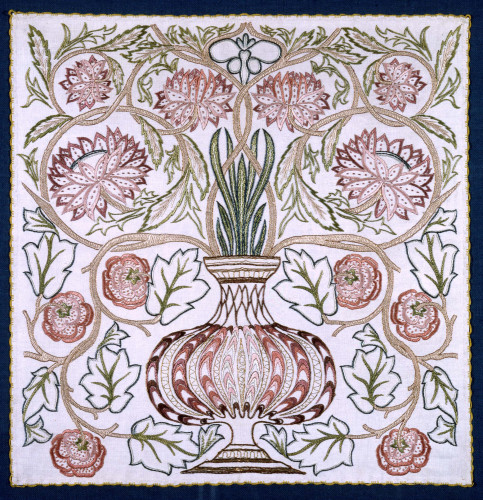‘Flowerpot’ was designed by William Morris for Morris & Co., c.1876. This fine example was embroidered by May Morris, using satin, stem, darning, herringbone, French knots and couched gold. The gold is so vibrant it is likely to be Japanese gold which doesn’t tarnish. Japanese gold thread was recommended by May Morris in her instructional book ‘Decorative Needlework’. The panel is edged with a handmade buttonhole braid. This version was gifted to May’s friend and neighbour Dorothy Walker, the daughter of the printed Emery Walker. Another example of ‘Flowerpot’, also embroidered by May is in the V&A (T.68-1939). William Morris’s original design drawing is in the Gallery’s collection (see A1061) and another version in the William Morris Society’s collection. Morris based the design on two Italian seventeenth-century lacis-work panels acquired by the South Kensington Museum in 1875. Lacis is a handmade net onto which a design is darned.
‘Flowerpot’ was available to buy in kit form from Morris & Co.; as a tracing pattern to be embroidered at home, partly started, or as finished version worked by the Firm’s embroidery department. According to the Firm’s ‘Embroidery Day Book 1894-1896’ (V&A), a tracing of ‘Flowerpot’ cost 5 shillings, whilst a started version on cotton or linen cost 14 shillings. The square shape meant it was adapted into cushions and mounted into firescreens. Other worked examples are in collections of National Museums Liverpool, Birmingham Museum and the Embroiderers’ Guild.

